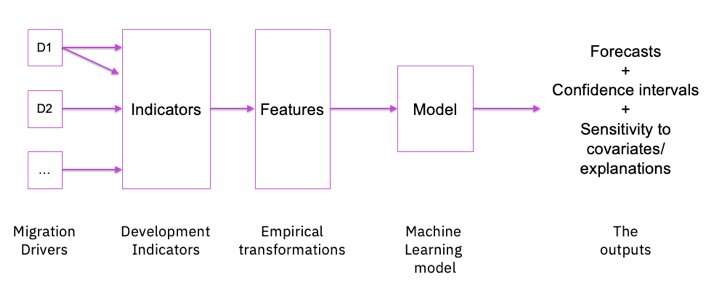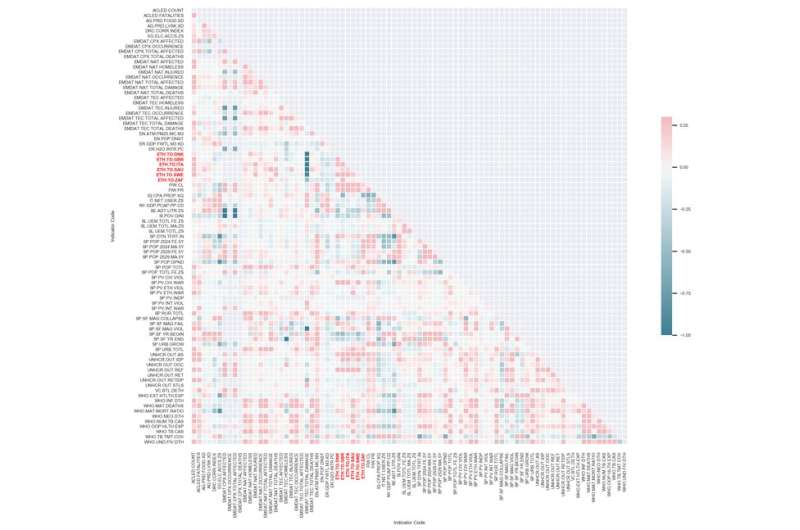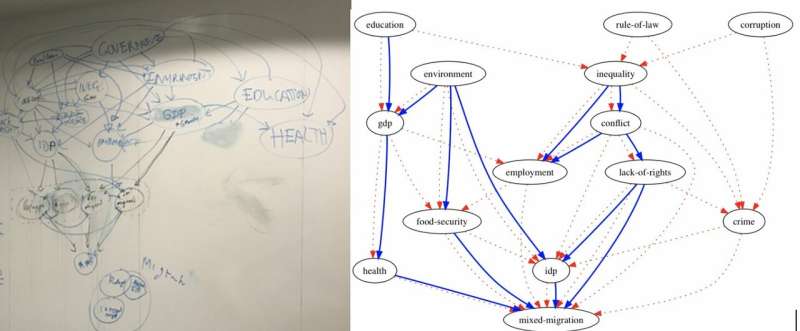Machine learning in action for the humanitarian sector

Governments across the world came together in Marrakesh this past December to ratify a pact to improve cooperation on international migration. Among other objectives, the Global Compact for Migration seeks to use "accurate and disaggregated data as a basis for evidence-based policies." How can machine learning technologies help with deeply polarizing societal issues like migration?
In early 2018, with support from IBM Corporate Citizenship and the Danish Ministry for Foreign Affairs, IBM and the Danish Refugee Council (DRC) embarked on a partnership aimed squarely at the need to better understand migration drivers and evidence-based policy guidance for a range of stakeholders. At the recent THINK Copenhagen keynote, the Secretary General of the DRC, Christian Friis Bach, presented the first results of this effort.
If we can predict migration and refugee flows we can prevent and improve the protection of people on the move. Great partnership with @IBM on predictive modelling. Presented first results at #THINK2018CPH! pic.twitter.com/x1JDyI8s6L
— Christian Friis Bach (@christianfbach) November 7, 2018
In this post, I'll walk through the development of a machine learning system that provides strategic forecasts of mixed migration along with scenario analysis. Mixed migration refers to cross-border movements of people that are motivated by a multiplicity of factors to move, including refugees fleeing persecution and conflict, victims of trafficking, and people seeking better lives and opportunity. Such populations have a range of legal statuses, some of which are not reflected in official government statistics.
Understanding migration dynamics and drivers is inherently complex. Circumstances differ from person to person. The question "why did you decide to move?" is not straightforward for people to answer. However, to the extent that individual decisions reflect structural societal factors, the dynamics can be partially explained by aggregate measures. For instance, economic drivers for movement can be expected to be related to employment opportunities and therefore macro indicators on employment. These challenges are compounded by data availability and coverage on specific indicators.
The forecasting system
We started by leveraging the 4MI monitoring program run by the DRC through which thousands of migrants on the move are interviewed. Analysis of survey data reveals high-level clusters of drivers for migration. These clusters ranged from lack of rights and other social services, to economic necessity and conflict. These drivers are then mapped to quantitative indicators. Features derived from these indicators are then fed to a model that generates forecasts along with confidence intervals (Figure 1). In addition, the system also generates context for each prediction by showing specific drivers that contributed to the forecast.
Using these indicators, we developed an ensemble model to make strategic forecasts annually for bilateral flows on mixed-migration volumes annually. Our evaluations showing error rates to be within a few thousand persons per year even for countries with volatile conditions. The system further allows for scenario analysis, where relative changes in influencing factors can be modelled to make adjusted predictions.
Interesting counter-intuitive dynamics emerge from such analysis. For instance, unemployment rates in Ethiopia are above average compared to Sub-Saharan countries. A large number of Ethiopians travel to Saudi Arabia for work. Increases in employment rates to the best fifth in the region will result in greater migration to the UK (two percent increase), Sweden (two percent increase) and Saudi Arabia (eight percent increase). This reflects an increased ability and means of Ethiopians to meet their aspirations abroad. If unemployment increases to the worst levels, the model predicts an increase of migration to South Africa (three percent increase) and Saudi Arabia (four percent increase), with EU destinations largely invariant to increases in unemployment.

Such detailed quantitative analysis has previously not been available to stakeholders who need to formulate policy responses.
Causal inference
The forecasting system described above is purely data-driven where we rely on the model to derive relationships between all the variables. Alternatively, if we seek to exploit subject matter expertise and include specific insights in the system, we could take the approach of probabilistic graphical models.
At a workshop held at IBM Research – Ireland, subject matter experts from the Mixed Migration Centre in Geneva and DRC drew out the "spaghetti" network showing how they expect indicator clusters to be causally linked. Using this as input, we then combined their expert opinion with the data. We used a technique called structure learning to develop such a network.
Forecasting using such networks typically don't perform as well as purely data-driven approaches presented above; nevertheless, they do aid in scenario analysis and policy analysis.
What's next?

These are the first few steps towards a future where policy makers have instant access to evidence when and where it is needed and where complex relationships can be explored easily to provide more insight driving better policy.
For now, we are continuing to improve the system and gather user feedback with subject experts within the DRC. Following more detailed validation, we will look to expand the geographic scope and scenario analysis capabilities.
Provided by IBM
This story is republished courtesy of IBM Research. Read the original story here.















